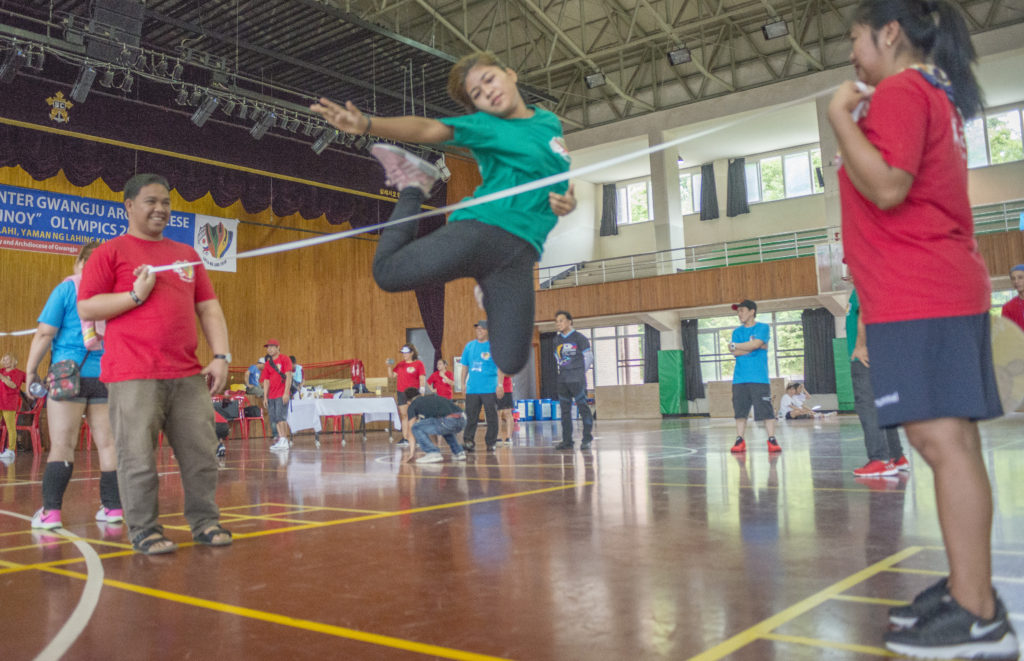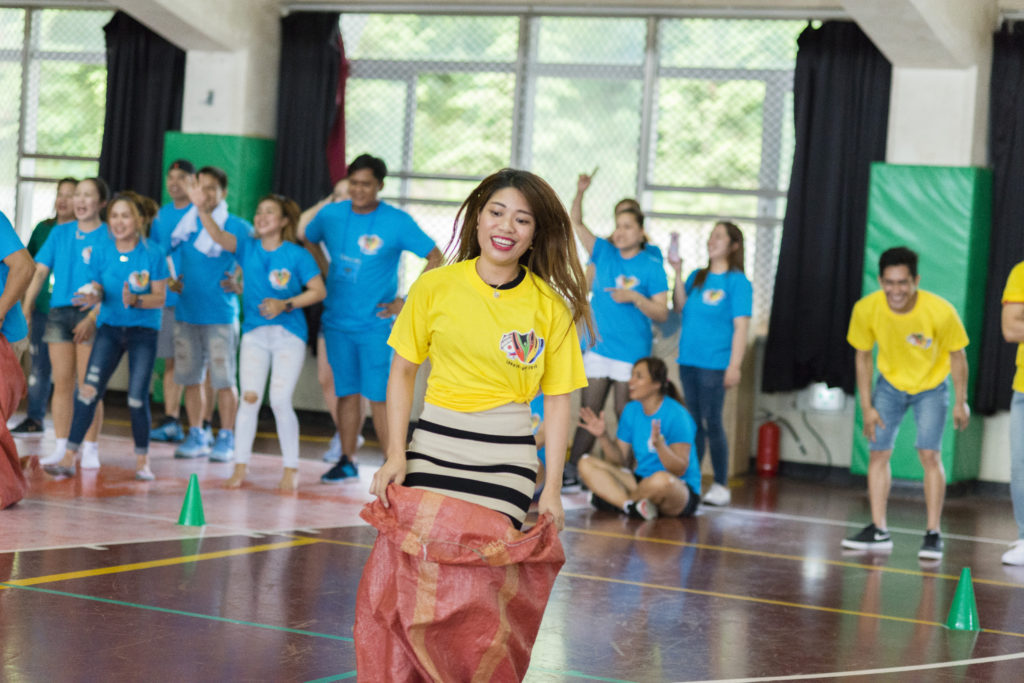The Games of Our Childhood: Larong Pinoy
Written by Ynell Lumantao-Mondragon
Photographed by Paolo Mondragon
The Filipino communities in Gwangju and nearby areas held their summer games last month. Dubbed “Larong Pinoy” (Filipino games), the event was a departure from their usual summer sports games of basketball and volleyball. Although women’s volleyball was included, for the first time ever, this year, Filipino traditional games were played. The Filipino communities from Gwangju, Yeosu, Jangseong, and Mokpo took part in this event, which was organized by the Gwangju Filipino Catholic Community (GFCC). This one-day community-building activity was geared toward promoting Filipino traditional games that enhance team-building, cooperation, and healthy competition among diverse migrant Filipino communities.

When asked about the reason for this change, GFCC President Rexie Ponce explained, “With traditional Filipino games, everybody will be able to participate since the games can have many players, unlike basketball and volleyball, which have a limited number of players. With these games, adults are able to relive their childhood memories. The games are challenging and fun, making participants feel like childhood mates. In addition, their multicultural families can also play or watch the games.”
Expressing her opinion about the games, GFCC Vice-President Sherryl Sambo Ko said, “Personally, I found this year’s games more meaningful than the previous ones because attendees could have a chance to participate regardless of their age or skills. It is more inclusive, and it gives us the opportunity to introduce Filipino games to our families, especially to our children.”
Baste Villanueva, the overall game master, admitted that it was not easy to organize such an event since all attendees were busy trying to earn a living for their families. He said that coordinating with different Filipino migrant communities was a challenge, but due to the tireless efforts and dedication of the organizing committee, they were able to put everything together. He is hoping that this will be the start of a much bigger gathering among Filipinos in Gwangju and nearby areas.

A total of nine games were played, although most of the games were combinations of different games. Let us look at three of them. Karerang takbo is a relay race where players have to pass through a variety of obstacles. There is no limit to the number of participants, but every team must have the same number of players. The obstacles are “piko” (hopscotch), “limbo rock” (adopted from the famous limbo dance), and a sack race. The game starts with each team forming a line. Players on each team take turns running from the starting point, and then go through each hurdle. From the turnaround point, players go through the same hurdles on the way back before the next runner’s turn. The team that finishes first wins the race.
Suot lusot requires team members to form a long line while holding each other’s hand without breaking their grip. A hula hoop is slipped from one person to another from start to finish and back. The first team that manages to get the hula hoop back to the starting point wins.

Karerang talon is a jumping obstacle relay race where all payers pass through hurdles from luksong tinik, to Chinese garter, and then to luksong baka. The first hurdle, luksong tinik, requires two players from the opposing team sitting on the ground facing each other to stack their feet and hands to create the obstacle while players from the other team try to jump over. The second hurdle, Chinese garter, requires two people holding both ends of a stretched garter horizontally while players try to cross over it without tripping. If the garter is too high, doing cartwheels to cross the garter is allowed. The final hurdle, luksong baka, requires jumping over a person who bends over with his hands placed on his knees. The game starts with each team forming a line. Players on each team take turns running from the starting line and go through each hurdle. From the turnaround point, players go through the same hurdles on the way back before the next runner’s turn. The team that finishes first wins the game.
It was decided that this activity would now become a yearly event, with Jangseong as next year’s host. In this age of smartphones and computer games, it is of paramount importance that we teach our children our ethnic games to preserve traditions while at the same time helping them develop their social skills as these games are played in groups.
The Author
Ynell Lumantao-Mondragon was born in the Philippines. She is a PhD candidate at Chonnam National University and holds master degrees in both business administration and linguistics. Her research interest centers on second language acquisition with a focus on language learning strategies. She has been an active member of the Gwangju community, creating events and performances such as The Vagina Monologues.







